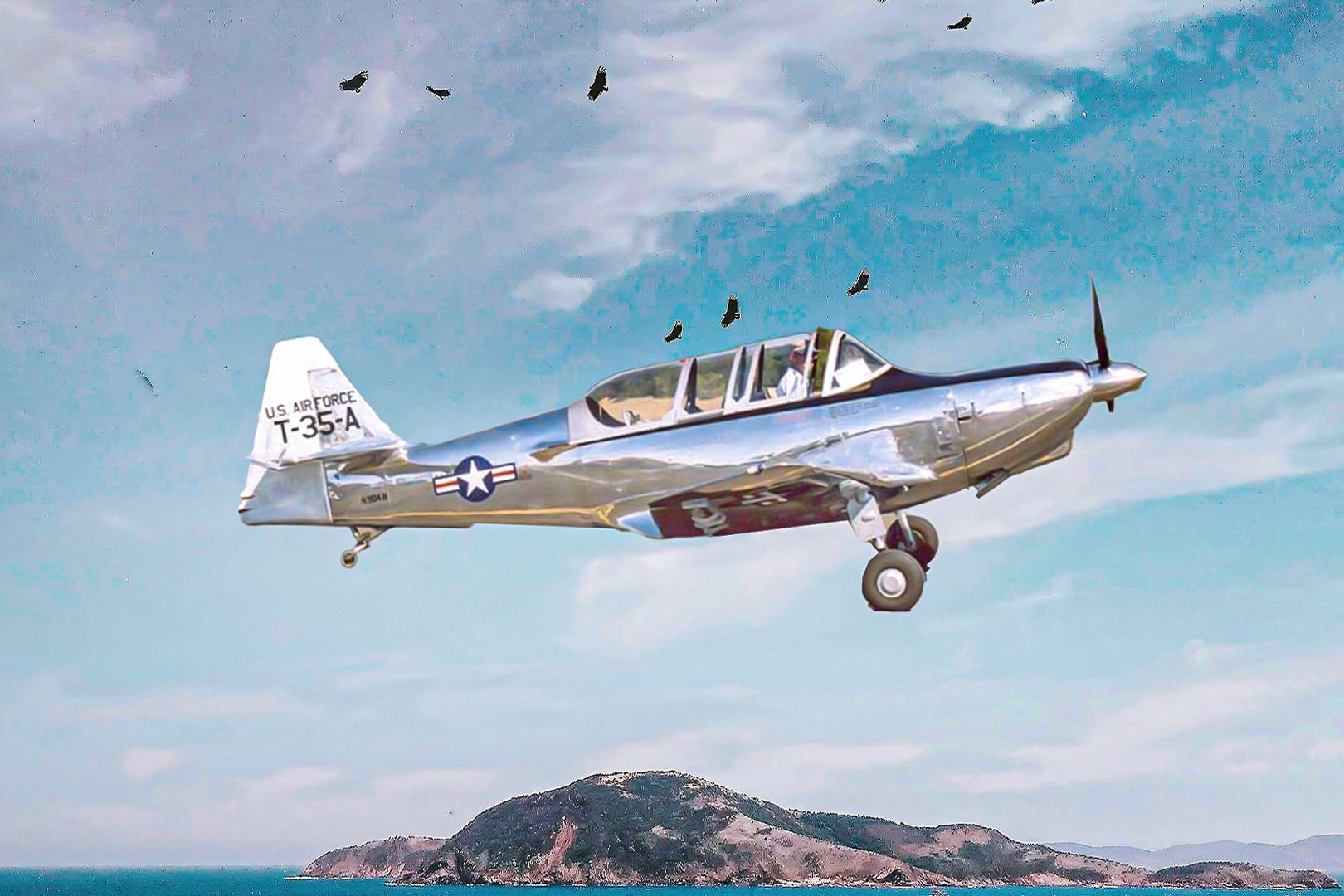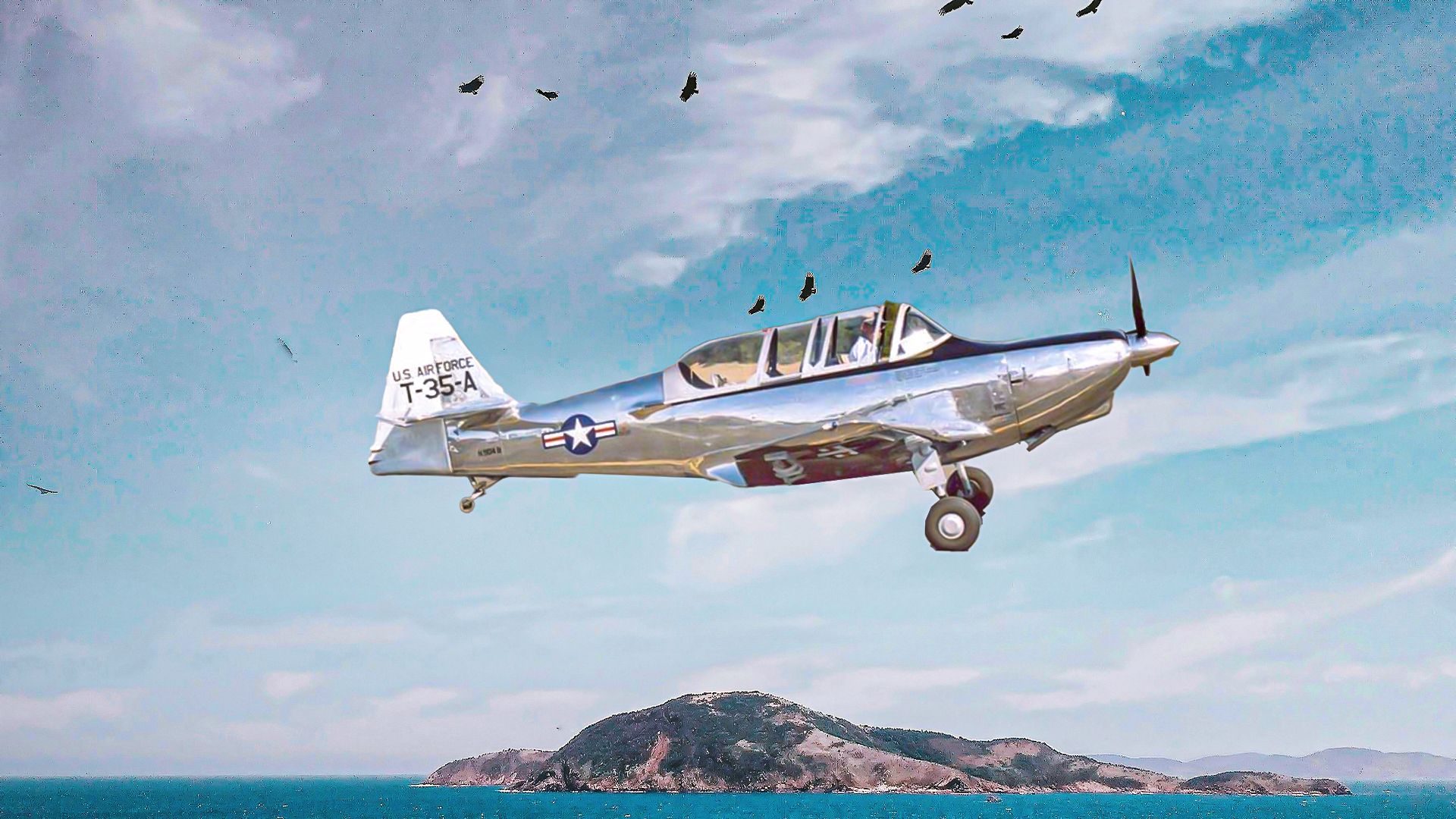
The aviation world is full of tales of aircraft that soared to legendary status, defining entire generations of warfare and flight technology. But for every P-51 Mustang or F-16 Fighting Falcon, there are those that barely got off the ground — metaphorically and literally.
One such aircraft is the Temco T-35 Buckaroo, a low-cost, light military trainer that, despite its potential, failed to achieve success with the United States Air Force (USAF). This is the story of the T-35 Buckaroo’s rise and fall.
The answer to a tight post-war budget
In the early 1950s, the USAF was in need of a new primary training aircraft to replace older models that had seen service during World War II. The rise of jet-powered aircraft and the increased complexity of military aviation necessitated the development of new trainers that could prepare pilots for the rapidly evolving nature of air combat.
Enter the Temco Aircraft Corporation, a Dallas-based aerospace manufacturer that set its sights on building an aircraft that would be both cost-effective and reliable. The Temco T-35 Buckaroo was designed as a simple, low-cost, light primary trainer for military use.
The goal was to create an affordable and efficient aircraft that would provide basic flight instruction to cadets before they progressed to more advanced trainers. The Buckaroo was powered by a 225-horsepower Continental O-470-3 engine, which gave it modest performance and handling characteristics suitable for novice pilots.
At the heart of the T-35’s design was the idea of affordability. With military budgets tightening in the post-World War II era, there was significant pressure to produce aircraft that could meet the USAF’s needs without breaking the bank. Temco marketed the Buckaroo as a no-frills solution that would be easy to manufacture, maintain, and operate.
The T-35 was somewhat mediocre – but it had its perks
From a performance perspective, the Temco T-35 Buckaroo was serviceable but largely unremarkable. Its key characteristics are:
- Maximum speed: 165 mph (266 km/h)
- Range: 650 miles (1,046 km)
- Service ceiling: 20,000 feet (6,096 meters)
Although the aircraft was more than capable of fulfilling its role as a primary trainer, its simple design – which prioritized cost-effectiveness over advanced capabilities – meant that it lacked many of the features found in more sophisticated trainers of the era.
Nonetheless, one of the key selling points of the T-35 was its ease of maintenance. Temco emphasized that the aircraft could be easily serviced by ground crews, thanks to its straightforward design and readily available parts. This was intended to reduce the overall cost of ownership and operation for the military, making it an attractive option for cash-strapped post-war budgets.
Why the Buckaroo failed to take off
Despite its low-cost appeal and functional design, the Temco T-35 Buckaroo failed to secure widespread adoption by the USAF. There are several key reasons why this aircraft never reached its full potential.
Firstly, the T-35 was up against stiff competition in the form of other primary trainers that offered better performance, durability, and versatility. One of its major competitors was the Beechcraft T-34 Mentor, which eventually became the USAF’s go-to primary trainer. The T-34 had better flight characteristics, a more robust airframe, and a superior overall design, making it the clear favorite over the Buckaroo.
Additionally, by the 1950s, military aviation was evolving rapidly, and the USAF’s needs were changing. The advent of jet-powered aircraft and the increasing complexity of combat operations meant that more advanced trainers were required. The T-35, with its basic design and lack of modern features, simply couldn’t keep up with the demands of a modernizing air force.
There was, however, one last hope for the Buckaroo in finding success: the general aviation market. Many military aircraft that fail to secure large military contracts eventually take off as general aviation aircraft.
Unfortunately, the T-35 Buckaroo never made this transition. Its niche role as a military trainer and its relatively modest performance meant that it had limited appeal to civilian pilots. This commercial failure further sealed the Buckaroo’s fate.
The legacy of the T-35 Buckaroo
The story of the Temco T-35 Buckaroo is one of missed opportunities. With its low-cost design and functional performance, it had the potential to fill a key role in the USAF’s training pipeline. However, competition from superior aircraft, changing military needs, and a failure to transition to the civilian market ultimately doomed the Buckaroo to obscurity.
Despite its failure, the T-35’s legacy lives on as a reminder of the challenges that aircraft manufacturers face in trying to meet the ever-evolving needs of the military. While the T-35 may not have achieved the success that its creators envisioned, it remains an interesting footnote in the history of aviation.
The Temco T-35 Buckaroo may not have soared to great heights, but its story serves as a valuable lesson in the importance of innovation, adaptability, and timing in the world of aviation.

